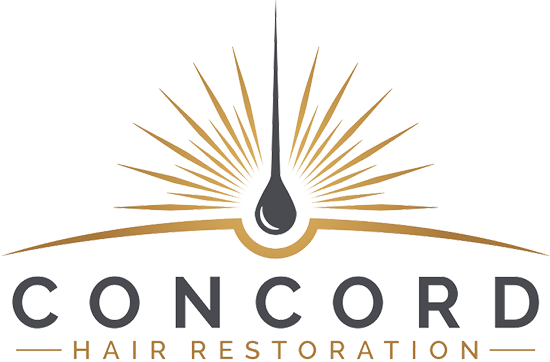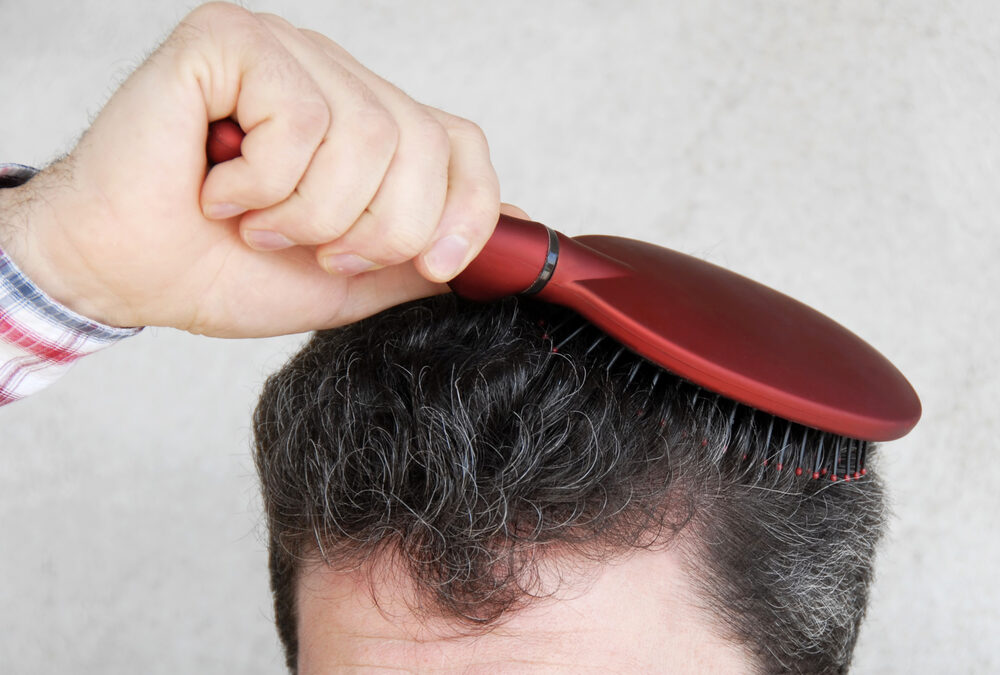Ever wondered why your grandmother always emphasized the importance of brushing your hair? Or why hair experts often recommend it? It’s not just an old wives’ tale. Brushing your hair has numerous benefits that promote hair health. Let’s dive deep and understand why.
The Science Behind Hair Brushing
Anatomy of a Hair Strand Each strand of our hair is more complex than it appears. It’s made up of three layers: the cuticle, cortex, and medulla. The outermost layer, the cuticle, protects the inner layers and gives our hair its shine. Proper brushing can help maintain the health of this protective layer.
The importance of hair brushing
Brushing your hair is more than just a beauty routine; it plays a crucial role in maintaining the health and vitality of your locks. Regular brushing can help distribute natural oils from the scalp down the hair shaft, ensuring that each strand receives the moisture it needs. This distribution not only aids in keeping hair hydrated but also enhances its shine and softness. A well-brushed mane is often a reflection of overall hair health, showcasing a smooth and glossy appearance that many strive to achieve.
Moreover, brushing stimulates blood circulation in the scalp, promoting the growth of new hair. The act of brushing gently massages the scalp, which increases blood flow to hair follicles, providing them with essential nutrients and oxygen. This is particularly beneficial for individuals looking to improve hair density and combat thinning hair. Additionally, a healthy scalp is vital for preventing issues such as dandruff and dryness, which can lead to hair problems if left unaddressed.
In essence, hair brushing serves multiple purposes, from aesthetics to health benefits. It is an invaluable practice that, when done correctly, can lead to improved hair texture and an overall boost in confidence. Therefore, understanding the correct methods and frequency of brushing is essential for anyone looking to maintain healthy, beautiful hair.
Benefits of Regular Brushing
- Distribution of Natural Oils Brushing helps distribute the scalp’s natural oils, known as sebum, along the length of your hair. This not only nourishes the hair but also provides a natural shine and prevents dryness.
- Increased Blood Circulation Gentle brushing massages the scalp, increasing blood circulation. This promotes hair growth by providing hair follicles with more nutrients.
- Removal of Dead Hair and Impurities Regular brushing removes dead hair and impurities that can weigh your hair down. It also prevents tangles and reduces the risk of hair breakage.
The Right Way to Brush
Choosing the Right Brush Not all brushes are created equal. Depending on your hair type (straight, curly, wavy), you’ll need a specific kind of brush. For instance, wide-toothed combs are ideal for curly hair, while paddle brushes suit straight hair.
Technique Matters Always start from the tips and work your way up to the roots. This reduces breakage and ensures you’re not pulling at knots and tangles.
Common Myths About Hair Brushing
- Brushing 100 Times a Day Contrary to popular belief, brushing your hair 100 times a day can do more harm than good. Over-brushing can lead to breakage and damage the hair cuticle.
- Brushing Wet Hair Wet hair is more susceptible to breakage. If you must detangle wet hair, use a wide-toothed comb and be gentle.
The 100 strokes myth: debunking the misconception
The idea that one should brush their hair 100 times daily has been a topic of debate for years. Many proponents of this myth argue that it leads to healthier, shinier hair, while skeptics warn against the potential damage caused by excessive brushing. To fully understand this age-old claim, it’s essential to look at both sides of the argument.
Brushing hair excessively can indeed lead to a host of problems, including split ends and breakage. Hair is delicate, and subjecting it to too much friction, especially when tangled, can cause more harm than good. The myth of 100 strokes likely originated from a time when natural bristle brushes were the norm, which could offer a different brushing experience compared to modern brushes that may snag hair. While some brushing is beneficial, moderation is key; most hair professionals now recommend brushing gently and based on individual hair type rather than adhering to a strict number of strokes.
Moreover, the focus should be on the technique employed while brushing. Rather than counting strokes, it is more beneficial to brush hair until it is detangled and smooth. This approach not only reduces the risk of damage but also encourages a more mindful and pleasant grooming experience. Thus, while the 100 strokes myth may hold some historical significance, it is essential to adapt hair care practices to better suit modern understanding and individual needs.
How often should you brush your hair?
Determining how often to brush your hair depends on various factors, including hair type, texture, and personal preference. For individuals with fine or straight hair, daily brushing can help maintain smoothness and prevent tangling. However, those with thicker or curly hair might find that brushing less frequently, perhaps every few days, is more beneficial. Over-brushing can lead to frizz and breakage, particularly in textured hair, so it’s important to listen to your hair’s needs.
In addition to hair type, the condition of your hair also plays a crucial role in how often you should brush. If your hair is damaged or prone to breakage, it may be wise to reduce the frequency and opt for gentler brushing techniques. Utilizing a wide-toothed comb or a brush designed for fragile hair can help minimize damage. On the other hand, if your hair is healthy and well-nourished, brushing daily can enhance its natural shine and texture.
Ultimately, the key is to find a balance that works for you. Observing how your hair reacts to brushing will guide you in establishing a routine that promotes health without causing stress to your strands. Whether you choose to brush daily or a few times a week, the focus should always be on quality rather than quantity, ensuring the technique and tools used align with your hair’s unique needs.
The Connection Between Brushing and Hair Health
Prevention of Hair Breakage Regular and proper brushing can prevent hair breakage by removing tangles and knots. It also strengthens the hair by distributing natural oils.
Enhancing Hair Shine As mentioned earlier, brushing distributes the scalp’s natural oils, enhancing the hair’s natural shine and luster.
Brushing your hair is more than just a styling ritual. It’s a health regimen that, when done correctly, can promote hair health, prevent breakage, and give your hair a natural shine. So, the next time you pick up that brush, remember you’re doing a lot more than just setting your hair in place.
What are examples of Good Hair Brushes for Men?
Men’s hair, just like women’s, varies in texture, length, and style, which means the choice of hairbrush can make a significant difference in hair health and styling. Here’s a guide to some of the best hair brushes for men:
- Paddle Brush:
- Best for: Men with long hair.
- Benefits: Helps detangle and smooth out long locks without pulling or breaking the hair. It’s also great for massaging the scalp and distributing natural oils.
- Boar Bristle Brush:
- Best for: All hair types, especially those looking for a natural shine.
- Benefits: Made from natural boar hairs, this brush is excellent for distributing the scalp’s natural oils, reducing frizz, and adding a natural shine.
- Vent Brush:
- Best for: Short to medium length hair.
- Benefits: Its vented design allows for faster drying when used with a hairdryer. It’s also great for adding volume.
- Round Brush:
- Best for: Men looking to add volume or curls.
- Benefits: When used with a hairdryer, a round brush can help create volume at the roots or curls at the tips.
- Wide-Tooth Comb:
- Best for: Curly or wavy hair.
- Benefits: Helps detangle hair without breaking the natural curl pattern. It’s also less damaging than finer-toothed combs.
- Military Brush:
- Best for: Very short hair or buzz cuts.
- Benefits: Keeps hair in place, stimulates the scalp, and distributes oils. It’s often used for its grooming rather than detangling properties.
- Tangle Teezer:
- Best for: Men with sensitive scalps or those prone to tangles.
- Benefits: Designed to detangle without pulling or tugging, making it less painful and reducing breakage.
- Afro Pick:
- Best for: Men with afro-textured hair.
- Benefits: Helps lift, shape, and add volume to afros. Its wide-spaced teeth are designed to minimize breakage.
- Barber Comb:
- Best for: Styling and precision.
- Benefits: Often used with scissors for hair cutting, this comb is excellent for styling and creating a polished look.
- Pocket Comb:
- Best for: On-the-go grooming.
- Benefits: Compact and portable, it’s great for quick touch-ups throughout the day.
When choosing a hairbrush or comb, it’s essential to consider your hair type, desired style, and specific needs. Investing in a good-quality brush or comb can make a noticeable difference in the health and appearance of your hair.
The right technique for brushing your hair
Brushing your hair effectively requires a proper technique to maximize benefits while minimizing damage. Starting at the ends is often recommended, as this approach prevents pulling and breaking the hair from the roots. By working your way up, you can gently detangle knots without exerting too much force on the strands. This method not only makes the brushing process more manageable but also helps maintain the integrity of each hair strand.
Using the right amount of pressure while brushing is crucial. Gentle strokes are more effective than aggressive tugging, which can cause breakage and split ends. It is advisable to use short, smooth strokes rather than long, harsh ones. Additionally, taking your time while brushing allows you to be more mindful of your hair’s condition, making it easier to spot any issues that may need attention, such as breakage or dryness.
Lastly, incorporating a brushing routine with other hair care practices can enhance the overall effectiveness. For instance, brushing your hair before washing can help remove loose hair and dirt, while brushing after applying conditioner can help distribute the product evenly. Additionally, using a detangling spray or leave-in conditioner before brushing can make the process smoother and less stressful for your hair. By following these techniques, you can ensure that your brushing routine is both effective and beneficial for your hair’s health.
FAQs
- Is it okay to brush hair every day? Yes, but ensure you’re using the right brush and technique to prevent damage.
- Can brushing lead to hair loss? Over-brushing or using the wrong technique can cause breakage, but it doesn’t directly cause hair loss.
- How often should I clean my hairbrush? Ideally, once a week. This removes trapped hair, dust, and product buildup.
- What’s the best brush for thick hair? A paddle brush with sturdy bristles is ideal for thick hair.
- Does brushing help in treating dandruff? While brushing can help distribute oils and keep the scalp healthy, it’s essential to use anti-dandruff products and maintain scalp hygiene to treat dandruff effectively.
Reveal the Best Version of Yourself with Concord Hair Restoration
At Concord Hair Restoration, we believe in more than just treatments. We’re dedicated to unveiling the most confident, vibrant version of you. Our commitment is to ensure a smooth journey, from the moment you walk in for a consultation to the dedicated post-surgery care.
Why wait any longer? If you’re in search of the best hair transplant in Los Angeles, it’s time we had a conversation.
📞 Reach out for a complimentary consultation!
📍 Visit Us at Our Los Angeles Location: 16661 Ventura Blvd. Suite #824 Encino, CA 91436
Call Now: (818) 800-2002

